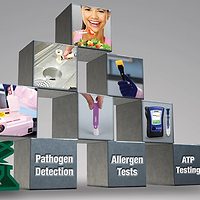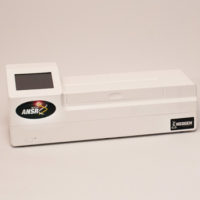Environmental Monitoring for Cleanliness and Pathogen Detection

The Food Safety Modernization Act (FSMA) is changing, or has changed, the way many processors and producers approach food safety in their operations. The FSMA implementation deadlines are here, and food companies are actively managing plans designed to prevent specific threats to the safety or quality of their products, starting with identification of the specific risks that each operation faces. Food safety test kit and equipment manufacturers have responded to this need in the market and have developed quick, easy and accurate tests to help producers and processors understand the risks their operations face and how they can be mitigated using sanitation monitoring, pathogen detection and foodborne allergen testing.
“Over the years, we have worked with all types of food companies as they evaluate and improve their food safety programs to ensure compliance or meet requirements,” says Neogen’s Gerry Broski. “Given the gamut of food products, the unique manufacturing processes and the requirements of particular producers, evaluation involves determining what material could conceivably contaminate the products and then defining what steps can be taken to reduce the risk of that contamination ever occurring. Sanitation monitoring is an obvious place to start, as suboptimal sanitation efforts will impact related efforts to ensure the safety and quality of their food products.”
Adenosine triphosphate (ATP) systems have become standard tools in the food industry for sanitation/hygiene monitoring. They are a good solution to verify the effectiveness of critical sanitation protocols needed to help ensure the safety and quality of food products. Many facilities now rely on ATP system results to move forward with production runs and make critical decisions on personnel performance, equipment serviceability, part or machine replacement, equipment selection and modifications to their Sanitation Standard Operating Procedures.
Neogen’s AccuPoint® Advanced ATP Hygiene Monitoring System is an example of the latest generation of ATP systems. The system features precision-engineered samplers with liquid-stable chemistry to more consistently collect any residues left on a surface after sanitation. The enhanced compact instrument works with the samplers to detect the residue collected by the samplers. User-friendly data management software helps organize and analyze the test results.
“ATP results are a good measure of sanitation effectiveness, which is critical to the safety and quality of food products; however, that information is only one part of an integrated environmental monitoring program,” says Broski. “Pathogens, such as Listeria and Salmonella, can exist within an acceptable threshold for even the best ATP test systems. Because of this fact, it’s critical that food producers also monitor production environments for the presence of specific pathogens of concern to their operation as a critical step in reducing the risks posed by these pathogens.”
The newest pathogen testing platforms use simplified DNA- amplification methods that enable almost anyone to produce accurate detection results for a variety of pathogens, including Salmonella, Listeria spp. and others. These test systems combine molecular-level accuracy with a low-cost instrument and methodologies that can be easily incorporated into a laboratory’s existing workflow. As compact systems, they fit easily on a benchtop and use simple procedures and advanced software to facilitate integration into a standard laboratory setting.
Neogen’s isothermal ANSR® is one example, offering assays for Salmonella, Escherichia coli O157:H7, Listeria spp., Listeria monocytogenes or Campylobacter. These assays each involve an enrichment step and a short test time, with total time to results between 10–32 hours. All of the company’s ANSR assays are validated through the AOAC Research Institute.
The latest “breakthrough” technology is genetic sequencing of various organisms (both pathogenic and spoilage), which not only identifies the organism but can also be used to track and trace the source of the organism. Genomic testing of food is being used by the U.S. Food and Drug Administration, the U.S. Centers for Disease Control and Prevention and public health labs to determine the sources of pathogen outbreaks. This genetic testing technology is gradually finding its way into the private sector as a tool to prevent contamination before food products are shipped from the factory.
Neogen’s NeoSeek genomic testing service currently offers three specific services: STEC confirmation from an enrichment culture for the seven deadly STEC E. coli strains—O26, O45, O103, O111, O121, O145 and O157. The second NeoSeek service product provides molecular Salmonella serotype determination from a colony isolate in 72 hours. NeoSeek testing is also available for meat species identification to detect adulteration in raw or cooked samples at as little as 0.1% or 1% horse, pig, chicken, beef or sheep in 48 hours. Neogen intends to expand its genomic testing service offering as market demand grows. If you have a need for a specific test, contact Neogen.
For more information, please contact Neogen at 800-234-5333 or 517-372-9200 or visit its website, Neogen.com.
Looking for a reprint of this article?
From high-res PDFs to custom plaques, order your copy today!







